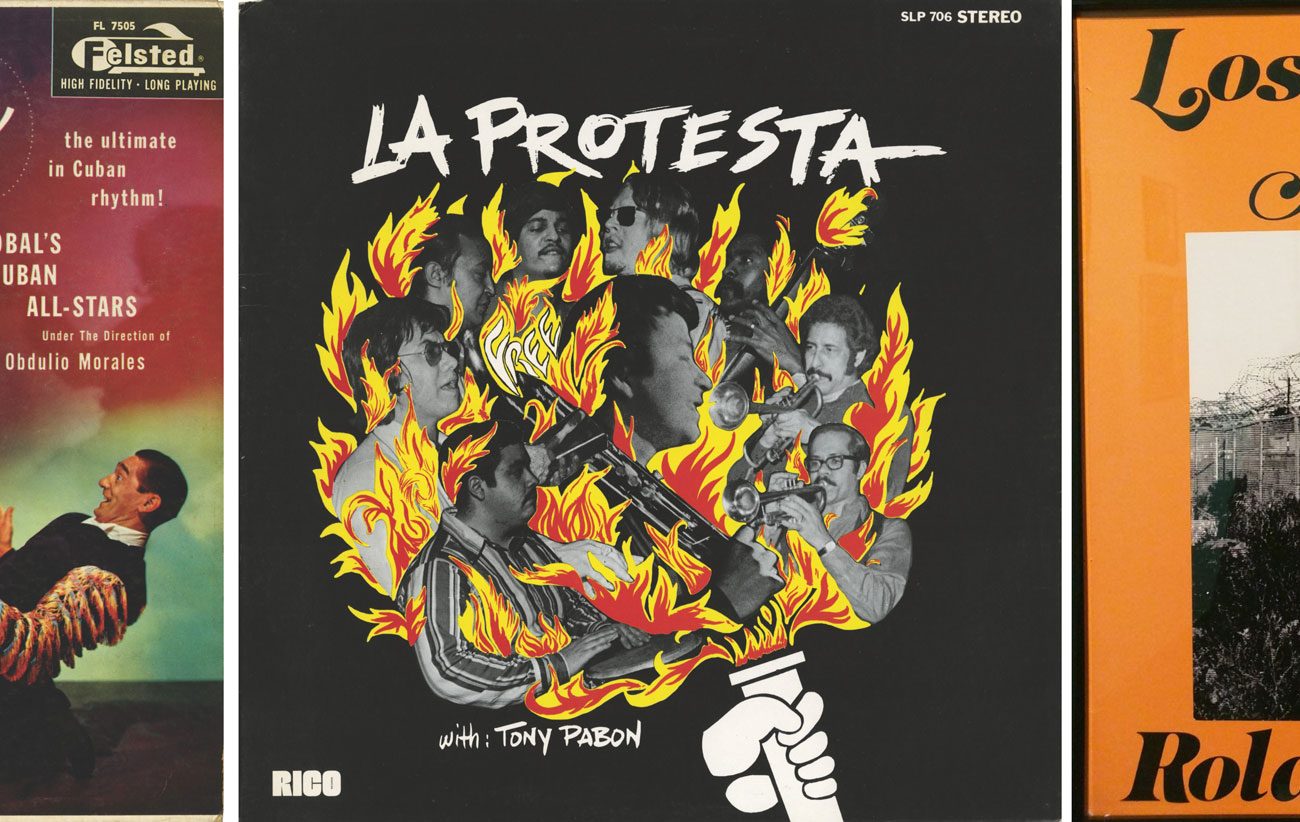When I was in high school, people cruised Van Nuys Boulevard for fun. I would now consider driving in bumper-to-bumper traffic — going nowhere — a total bummer. Teenagers thought it was fun, although I’m not sure how much those driving lowrider cars at the time thought any of this would end up in an art museum.
Think again. The Visual Clave exhibit at the Jordan Schnitzer Museum of Art through April 21 would like you to consider the album cover of I Wanna Be A Low Rider / Low Rider Fever (1980) in terms of cultural expression.
Organizers of the exhibit — Philip Scher, University of Oregon professor of anthropology and folklore and public culture, and Pablo E. Yglesias, Cuban-American musician and artist — would like you to critically consider all the album covers on display in terms of cultural identity.
Visual Clave: The Expression of the Latino/a Experience through Album Cover Art: 1940-90 was inspired by Yglesias’ 2005 book Cocinando: 50 Years of Latin Album Cover Art. Most if not all of the albums come from his private collection. Though this is an academic exhibition, asking you to think critically about items you’d otherwise be handling in a used record shop, knowing it came out of his collection makes it personal as well.
Discussion of music and art, history and culture are presented through album covers. The theme of dance isn’t confined to a particular era. Baila Que Baila: Join the Dance introduces a handful of album covers whose release dates span decades, perhaps because dance, as the show tells us, is central to music with African roots. These origins can be “life-affirming, communal, ritualistic, ecstatic and trance-inducing.”
Agua! Agua! is an album that features Antobal’s Cuban All-Stars and claims to be “the ultimate in Cuban rhythm!” The picture on the cover is of a man in a suit, an audience member, being enticed by a scantily clad female dancer. He stands at his table with arms enthusiastically reaching towards her. There is another man on the floor, wearing clothes of a performer, amazed at the spectacle. This illustration does indeed seem to present ecstatic and trance-inducing behavior.
Standing beside me at the museum were a man and woman who laughed out loud at the cover. Maybe it was because the woman portrayed on the cover was nearly nude while the men were fully clothed. Maybe it was the shock of being confronted with aesthetics from a different time (1959). No doubt the couple appreciated the cover, but I believe they were appreciating it ironically.
“Let’s see, under what circumstances do I kneel?” the man said to the woman, as if he couldn’t ever imagine being brought to his knees by anything.
The large majority of album covers address politics of the day as seen from the Latinx and Chicanx point of view. Albums such as Free by La Protesta (1970) and Justicia by Eddie Palmieri (1969) reflect the struggle made at the time to attain civil rights. And Azteca, for example, with its wonderfully illustrated Aztec-inspired calendar including piano keys, show that the musicians were embracing their native identity.
“Clave,” I learned, refers to the African-inspired beat found in such styles as the mambo, cha-cha and rumba. Music playing in the background, exhibiting the auditory clave, might make you want to dance along as you think critically about the visual. But make no mistake; this show focuses on the visual.
Some album covers from the past seem particularly relevant to the moment we’re in now. The cover to West Side Story: The Original Soundtrack Recording (1961) reminded me that a remake of West Side Story is in the works with original cast member Rita Morena, who was apparently the only Latina lead in the original movie.
The album cover that struck me as most timely is Rolas de Aztlán by Los Alacranes Mojados (1979). It features a black and white photograph centered against an orange background. In the photograph are four men carrying guitars. Two men stand on one side of a barbed wire fence while the other two climb over. All of the men look straight at the camera, so they’re not really crossing the border. They’re posing for a picture. And the picture says: We’re here to play music.
